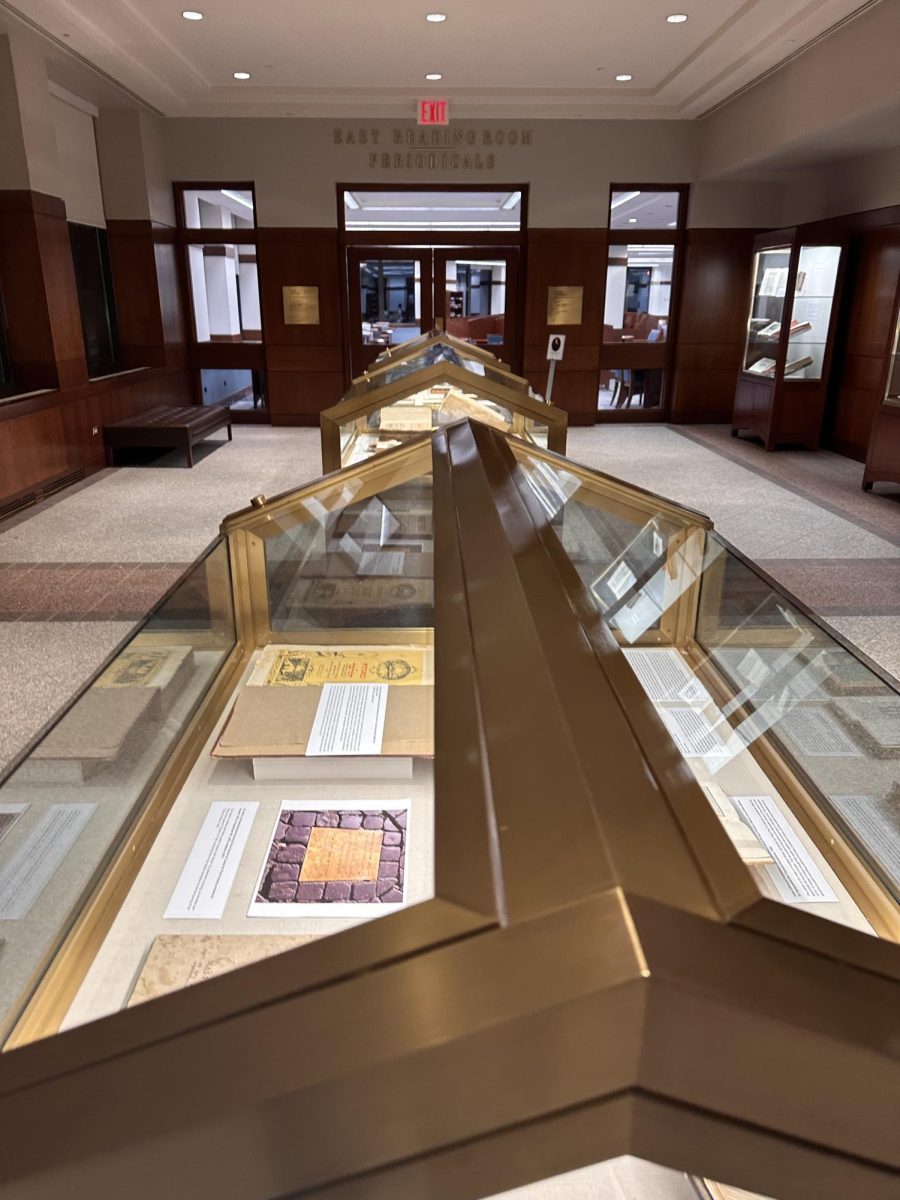
Due to Fordham’s religious affiliation as a Catholic and Jesuit university, the university was obligated to abide by the Index of Prohibited Books until 1966 when it was abolished. This means that less than 60 years ago, Fordham would not have been able to provide an exhibit like this. (Courtesy of Emma Kim/The Fordham Ram)
.sno-story-photo-area {
width: 100%;
margin-bottom: 0px;
max-width: 100%;
margin-left: auto;
margin-right: auto;
}
.sno-story-photo-area img {
object-fit: contain;
}
.sno-story-photo-area .sno-story-photo-image-area {
height: unset;
max-height: unset;
background: #dddddd;
}
.sno-story-photo-area .sno-story-photo-image-area img {
height: unset;
}
.sno-story-photo-area .sno-story-photo-caption-area,
.sno-story-photo-area .captionboxmittop {
max-width: 100%;
margin-left: auto;
margin-right: auto;
}
@media only screen and (max-width: 800px) {
.sno-story-photo-area .sno-story-photo-caption-area {
padding-left: 20px;
padding-right: 20px;
}
.sno-story-photo-area .sno-story-photo-image-area {
height: unset;
max-height: unset;
}
.sno-story-photo-area .sno-story-photo-image-area img {
height: unset;
}
}
Walsh Library on Fordham’s Rose Hill campus has been home to many special exhibits curated by university personnel to spotlight and educate on a variety of topics. “Banned! A History of Censorship” is a current exhibit that opened Sept. 20, 2023, and will remain available to visit through March 15, 2024.
The Free Speech Center at Middle Tennessee State University explains book banning as “a form of censorship [which] occurs when private individuals, government officials, or organizations remove books from libraries, school reading lists, or bookstore shelves because they object to their content, ideas, or themes.” Recently in the United States, there has been a lot of news about the banning of books addressing topics such as Black history, Judaism and the Holocaust and LGBTQ+ topics. However, this is far from the first experience of book banning. “Banned! A History of Censorship” allows visitors to learn about the history of book banning, practices and methods of censorship, and how censored works have been able to fight through.
Due to Fordham’s religious affiliation as a Catholic and Jesuit university, the university was obligated to abide by the Index of Prohibited Books until 1966 when it was abolished. This means that less than 60 years ago, Fordham would not have been able to provide an exhibit like this. Included in the exhibit is more information as to how Fordham in particular handled books included in the Index. Professor Magda Teter, the Shvidler Chair of Judaic Studies for Fordham and a curator of the exhibit, explained that the Index of Prohibited Books was “a tool of control over which books could be read by Catholics,” explaining that the list initially banned works by Luther, Calvin, Erasmus and other books that were thought to lead to heresy but was later expanded to include far more works of religion, philosophy and literature.
The exhibit shows historic book bans and acts of censorship such as books that were burned by the Nazis and the books listed on the Index before its abolition. However, the exhibit also contains information on the current acts of censorship occurring throughout the country. Additionally, throughout the research it was discovered that many important books for classes in European history and literature, including books on the syllabi of Fordham’s required core classes, were at one point banned by the Index of Prohibited Books. These include the works of John Locke, David Hume, Immanuel Kant and John Stuart Mill. The exhibit developed throughout its research period to reach its final fruition as a conceptualization of the long history of book banning and censorship at Fordham University, as well as across the United States and the world.
Teter also explained that the exhibit has been two years in the making. Three students worked as research interns for the team: Samantha Sclafani, FCLC ’22, Kevin Bogucki, FCLC ’23, and Hannorah Ragusa, FCRH ’26. They worked on researching, writing label drafts, layout and telling the story alongside university staff.
When asked what she hopes that students get out of the exhibit, Teter answered, “As this exhibit demonstrates, cultural, religious, and moral values are never static. They change over time. If some books and ideas become acceptable, others might become abhorrent. We hope viewers will ask themselves: Should all books and ideas be freely accessible at all times? Are there or should there be limits of censorship or limits to access to knowledge?”
The exhibit is open to alumni, faculty/staff, parents, students and the public. The exhibit is located in the main exhibition hall on the first floor of Walsh Library, as well as in the Special Collections on the fourth floor. The Walsh Library collaborated with the Center for Jewish Studies.
Generous donations to the Center for Jewish Studies at Fordham allowed for the lecture series and student research involved with the exhibit to occur. Anyone interested in seeing the exhibit and learning more about censorship throughout history should be sure to check it out while it is still available.
